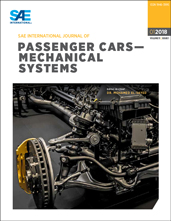Extension of the Honda-DRI “Safety Impact Methodology” (SIM) for the NHTSA Advanced Crash Avoidance Technology (ACAT) Program and Application to a Prototype Advanced Collision Mitigation Braking System
- Event
- Content
- The Advanced Crash Avoidance Technologies (ACAT) program initiated by the National Highway Safety Administration had two major objectives. These were to develop a standardized Safety Impact Methodology (SIM) tool to evaluate the effectiveness of advanced technologies in avoiding and mitigating specific types of vehicle crashes; and to develop and demonstrate objective tests that are used in the SIM to verify the safety impact of a real system. Honda and Dynamic Research Inc. (DRI) have been developing and applying such SIMs for several years and have a Cooperative Agreement with NHTSA to further develop a SIM that provides an estimate of full systems safety benefits at a national level. Objective tests that produce quantifiable, repeatable and reproducible results have been developed to ensure that the proposed safety problem countermeasure will meet full system performance specifications and that the results are directly linked to the safety needs and a sample of technology-relevant accidents being addressed. The objective tests, which are based on dynamic reconstructions of a sub-sample of the technology-relevant real accidents, include full-scale track tests with an expert driver using automatically guided soft targets (GSTs) of an automobile and a pedestrian, and driving simulator tests with a jury of typical drivers in order to include the effects of a sample of driver reactions to system warnings and interventions. Results from the objective tests were used to parameterize, calibrate and validate the SIM tool, which was then used to estimate US-level safety benefits. The SIM tool itself includes modules for automated reconstruction of conflict and crash scenarios; definition and sampling of technology-relevant crash types; dynamic simulation involving a human-vehicle-device-environmental model; and an overall safety effects estimator. An example application of the developed SIM tool and related objective tests is used to evaluate a Honda prototype Advanced Collision Mitigation Braking System (A-CMBS).
- Pages
- 20
- Citation
- Zellner, J., Van Auken, R., Chiang, D., Broen, P. et al., "Extension of the Honda-DRI “Safety Impact Methodology” (SIM) for the NHTSA Advanced Crash Avoidance Technology (ACAT) Program and Application to a Prototype Advanced Collision Mitigation Braking System," Passenger Cars - Mechanical Systems 2(1):875-894, 2009, https://doi.org/10.4271/2009-01-0781.
